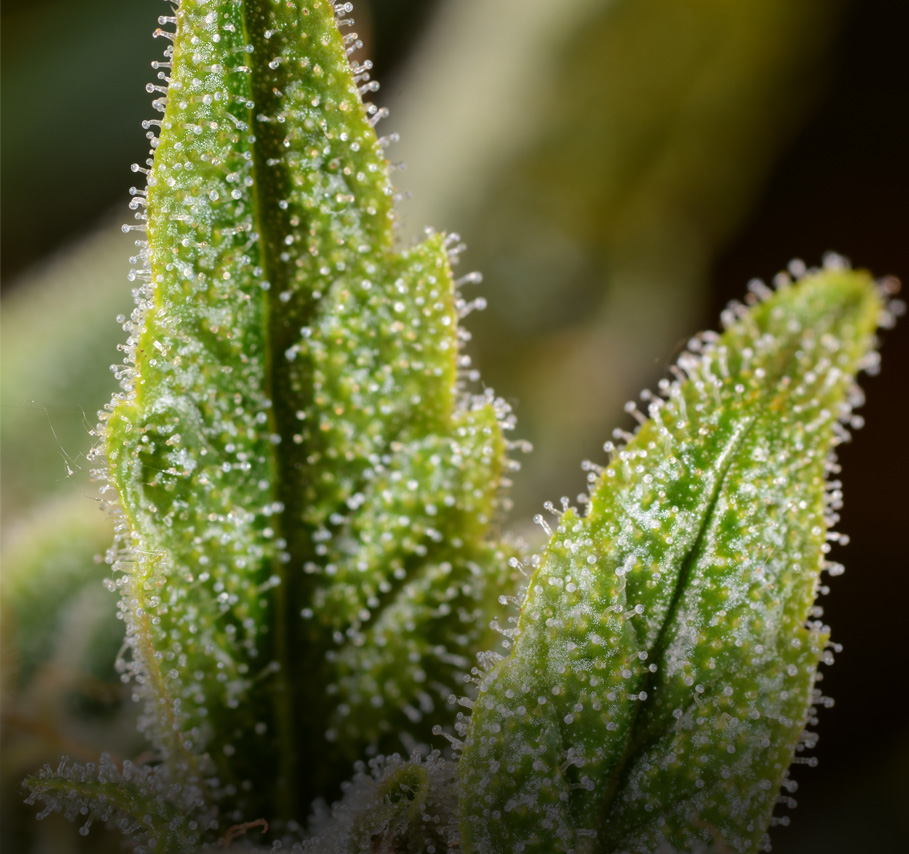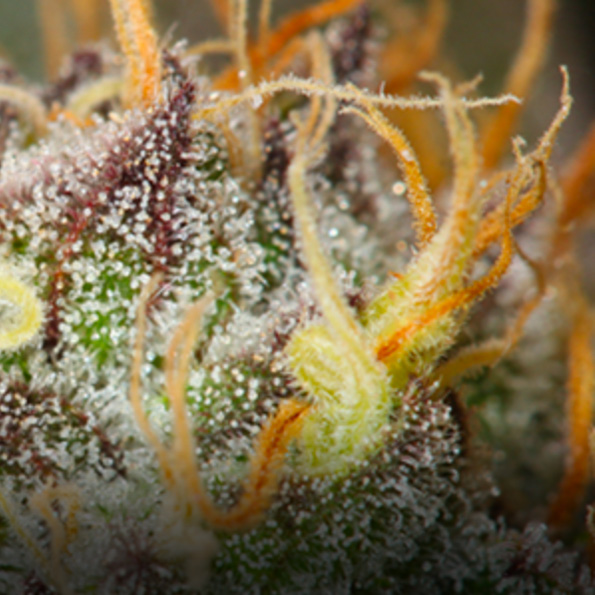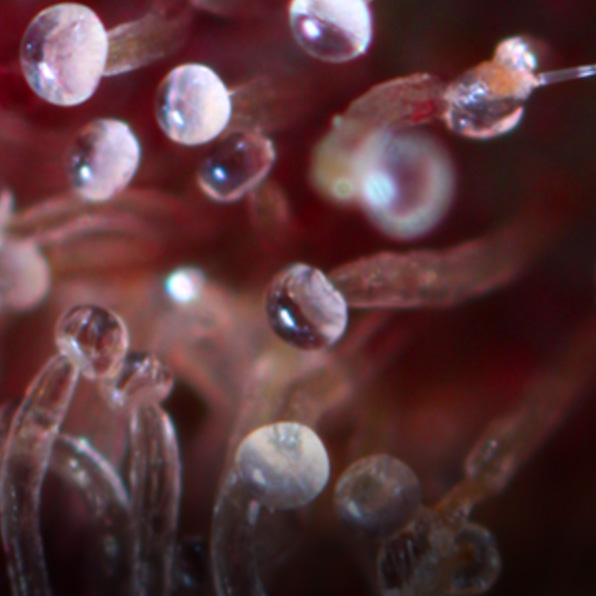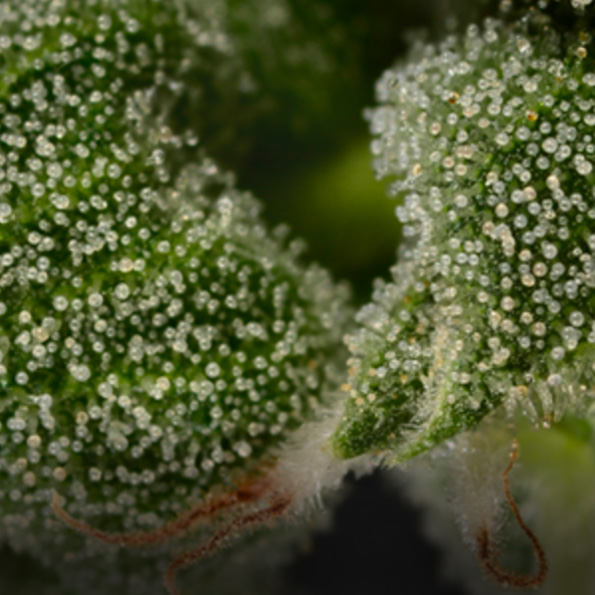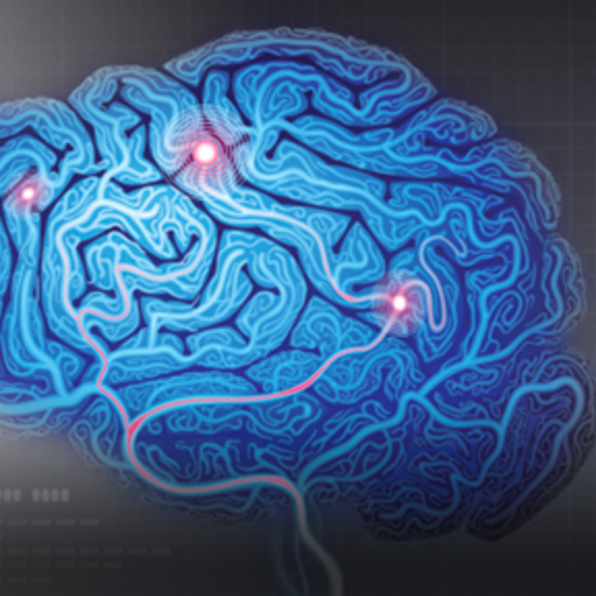Learn the Fundamentals of Cannabis
It’s no secret that Cannabis has healing properties. This high‐level overview links the laws of nature to human physiology to help make sense of the science beneath the leaf.
Click on a subject to learn more
The Cannabis Plant
Exceptionally versatile and valuable, the Cannabis plant can be used in a vast array of products ranging from paper and clothing to building materials and fuel. Pushing its historical use of medicine aside in the 20th century, most recently, Cannabis has been known primarily for its psychoactive effects in humans. Only now as the industry continues to expand Cannabis research, its medicinal properties and uses continue to unfold and pique the interest of patients, healthcare professionals, and cultivators alike. The rebirth of Cannabis as a medicine is upon us. Let’s take a deeper look at this incredible plant and understand why it’s so special.
Beyond the Leaf
The iconic five‐or‐seven‐bladed leaf of the Cannabis plant is actually the least important of its features. While this image serves as a common rallying flag to both the industry and cultural aspects surrounding it, the plant itself is much more complex than its distinguishing leaves.
Cannabis, like many plants, is a flowering species that undergoes multiple life stages. The plant’s “buds” (or racemes) are actually branches of tiny, tightly clustered flowers of the female plant. Buds reach their final form after a slow, controlled drying process, at which point they are harvested, trimmed, and ready for consumption.
There are many uses for the leaves, stalks, and seeds of the plant, however, most Cannabis cultivators harvest only its flowers, as they hold the highest concentration of trichomes. Trichomes are tiny, crystalline growths found on the flower buds, that produce the oils which contain a majority of Cannabis’s medicinal properties.
A Not-So-Simple Seed
Cannabis is a dioecious species of plant, meaning there are both female and male plants that grow independently of one another. As opposed to many self-pollinating flowers, Cannabis requires a male reproductive organ (“male”) in order to create seed. When a male’s pollen is caught by the female’s stigmas, it initiates the seed development, which is the plant’s only natural method of reproduction.
As the seeds develop inside the bracts of the female flower, their color changes, progressing from off-white, to pale green and finally becomes a rich, tiger-striped brown, indicating its ripeness. The female plant continues to carry the seeds to term, whereas the male’s role is finished. The male generally dies long before the female finishes its life cycle.
The Cannabis Life Cycle
The life stages of the Cannabis plant are generally divided into the following three phases:
Phase One: Propagation
In the beginning, the plant is very tiny, simply trying to “establish a foothold” in its environment. There are two different ways plants can be produced in this stage: by growing a seed, or via rooted cutting, known by horticulturists as “cloning.” A clone is a genetic copy of the parent plant, which is created by cutting a branch from the “mother” plant and placing it in a special solution to stimulate root growth. Once its roots are developed, the plant begins stretching upward towards the light, signaling the next life phase.
Phase Two: Vegetative Growth
During this stage, the plant is adding as much mass as possible to its frame. In ideal growing conditions, it can grow many times its original height in just a matter of weeks. From a tiny, two-leaved seedling comes a plant. This is also the stage in which cultivators are able to identify the gender of their plants. Traditionally, for flower production, the males are culled from the crop, and the females become the sole focus for proceeding.
Phase Three: Flowering
The key to this phase is controlling the plant’s environment and mimicking nature, especially with respect to light. For instance, exposure to less than 12 hours of light per day, a cycle similar to an outdoor setting in autumn, allows the plant to enter the flowering stage of development. At this point, it undergoes an initial burst of growth and vigor, triggering a natural reproductive response to create more surface area that allows for increased flower production, which in turn creates more area for seed population in females, that in nature would then create the next generation of plants.
During this growth spurt, plants can double or triple in size before their vertical height eventually slows, thus signaling the plants to concentrate their energy and resources on producing flowers.
As the weeks pass by and the light diminishes, the flowers begin to develop rapidly throughout the female plants. As the flowers continue to grow, the stems become totally covered with fully formed racemes, or “buds. ” As the buds grow larger and denser, their crystalline trichomes undergo a maturation process of their own.
If the plant is allowed to continue flowering for an extended period, it will eventually die on the vine. Careful adjustment of the plant’s light exposure however, i.e., a natural change of season outdoors, harsh winters notwithstanding, increasing its exposure above 12 hours per day indoors, will allow the plant to return back to a vegetative state. It can then begin the cycle anew, shooting fresh green branches out of old, brown stumps.
Rejuvenating a plant in this fashion rarely takes place in commercial Cannabis production, as the plants are usually harvested at peak ripeness rather than left to die or revegetate.
Cannabinoids
Cannabinoids are compounds that play a critical role in medical Cannabis. There are three types of cannabinoids, which are characterized by their source of origin.
Endocannabinoids, which are synthesized in the body; plant based Phytocannabinoids, predominantly found in the Cannabis plant; and Synthetic Cannabinoids that are created in laboratories to mimic the first two. The chemical profile for all cannabinoids includes flavonoids, terpenoids, sugars, proteins, enzymes, amino acids, and fatty acids.
Cannabinoids work together to equalize their collective physical or physiological effects. In conjunction with endocannabinoids, various phytocannabinoids in Cannabis have demonstrated the ability to restore balance and optimize the immune system. Out of nearly one hundred compounds classified as phytocannabinoids, only a handful are most prevalent in Cannabis.
Continued research is certain to uncover many more cannabinoids correlated with a multitude of benefits for an array of health conditions. A shortlist of the most relevant phytocannabinoids currently being studied for medical efficacy is as follows:
Tetrahydrocannabinol (THC)
The most common and prevalent chemical in the Cannabis plant, THC molecules, are responsible for the majority of the plant’s psychoactive effects in humans. THC has a host of effects depending upon one’s body chemistry, but its primary medical benefits result from its analgesic (pain relief), anti‐spasmodic, anti‐tremor, anti‐inflammatory, and anti‐emetic (nausea protection) properties. It is also known as an appetite stimulant and has therefore been credited for helping patients suffering from AIDS, chemotherapy, and cachexia. There are two forms of THC: THCA and THCV.
Tetrahydrocannabivarin (THCA)
THCA is the most prominent compound found in the raw Cannabis plant. It is inactive and naturally non‐psychoactive in its raw form. It transforms into the active, psychoactive cannabinoid THC when heated above 250 degrees Fahrenheit. (This process can take place over an extended period of time through extraction or instantly, by burning or vaporizing the material.) THCA is credited for the anti‐inflammatory and anti‐spasmodic effects of Cannabis and is also believed to be a factor in its anti‐proliferative (inhibiting tumor cell growth) effects, as well.
Activated THCA, or THC, concentrations normally range from 10% to 25% in raw, dried Cannabis flower, and from 50% to 90% (or greater) in concentrated products.
Tetrahydrocannabivarin (THCV)
Fewer studies have focused on this cannabinoid, however, THCV is believed to enhance many of the signature effects of THC. Often found more frequently in Sativa-dominant plants, varieties rich in THCV are known for hallucinogenic effects. Although more research is necessary for statistical assumptions, many scientists believe that THCV may be a contributing factor in reducing appetite. THCV is rare and normally yields an extremely low concentration of less than 5% of total content.
Cannabidiol (CBD)
A compound underappreciated until recently, CBD contains a host of medical properties associated with neuroprotective (protecting nerve cells against damage, degeneration, or impairment of function) and immunomodulatory functions specifically related to anti‐inflammatory, anti‐convulsion, anti‐psychotic, and antioxidant effects.
Unlike THC, CBD is not psychoactive. In fact, it is known to temper the stronger effects of THC. CBD content (yielding lower concentrations of THC than most Cannabis varieties) can normally range from 15% to 25% for select varieties.
Cannabinol (CBN)
A compound not inherent in the Cannabis plant, CBN is created as a result of two different processes: the natural maturation and degradation that takes place within the plant’s trichomes, and when THC is exposed to oxygen or heat over time.
While CBN is not technically a psychoactive compound like THC, it is nonetheless highly effective, and most credited for its sleep‐inducing qualities. With many properties similar to those in THC and CBD, CBN is known for reducing inflammation, convulsions, nausea, and pain, as well as stimulating appetite.
CBN concentrations are typically lower than both THC and CBD, normally ranging from 1% to 5% of total content.
Terpenes
Have you ever noticed how a handful of mint leaves smells just like a pack of spearmint gum? Or wondered how the lemony scent in certain cannabis strains mirrors the citrus burst of a Meyer lemon, even though it is dried and green, not juicy and yellow?
We have terpenes to thank for the distinguishing aromas we find in many plants. Scents such as menthol, citrus, cinnamon, ginger, cloves, and eucalyptus are all derived from terpenoids. The aromatic properties of plant terpenoids play a traditional role in medicine, ranging from herbal remedies believed to fight cancer to pharmaceutical and antibacterial functions.
Benefits Beyond the Senses
Terpenes aren’t just pleasing scents; they are the main building blocks of the essential oils and resins instrumental in the plant’s defense systems. For example, honeybees are attracted to the scent in certain flowers that provide nourishing pollens, which in turn, play a positive role in the plant’s reproductive cycle. Alternatively, predatory creatures have an innate response to avoid specific scents that some plants create to protect their survival. Terpenes also provide the foundation for complex molecules like pigments, sterols, hormones, and vitamins. In fact, terpenes are the basis for aromatherapy practices.
Cannabis terpenes are believed to play an even more important role in health benefits, either directly or indirectly. For example, the terpene, Myrcene, is known to make cells more permeable, which increases the absorption of cannabinoids by the body. Beta‐Caryophyllene (BCP) terpenes, which are normally found in black pepper, rosemary, and highly concentrated in Cannabis, have demonstrated the direct effect of cancer‐killing properties.
A Scientific Snapshot
While many terpenes interact harmoniously, some combine with cannabinoid receptors in the body to block the formation of other compounds, while others act as a binding agent. This explains why terpenes are believed to produce a broad range of both psychoactive and physiological effects commonly associated with THC and CBD alone. In fact, it is the synergy of these many compounds and receptors working together that creates the commonly known “entourage effect.”
Trichomes
While many features of the Cannabis plant are associated with human health benefits, it has one component of exceptional importance: the trichome. To the naked eye, trichomes are recognized as the translucent, crystal‐like hairs on the flower buds. If you were to view them under a microscope, however, you would see thousands of glistening, resin‐filled glands on the surface of the plant’s leaves, buds and stems.
A Significant Step beyond Survival
Trichomes are epidermal outgrowths that play an important role in nature, particularly in plants. In general, trichomes serve as a defense system to protect the plant from predators such as insects or birds, inhibit the growth of certain fungi, and guard against environmental elements. Many plants have trichomes, however the Cannabis plant is unique. In addition to producing its own immune and defense system, one of its trichomes — capitate‐stalked trichome — performs an important function. Specifically, the capitate‐stalked trichome facilitates the maturation of the plant’s medicinal properties accredited to Cannabis.
Where the Magic Happens
As the female plant matures, these tall, glandular trichomes sprout from the plant’s cells into crystalline structures that resemble tiny glass mushrooms on the flower bracts. The bract, a stem‐like piece, or “stalk,” serves as a tunnel through which the chemical compounds are transported from the plant’s cells to the cap‐shaped “head” of the trichome. The head is made of a hard, outer shell, which encases an oil‐rich interior that contains the plant’s medicinal compounds and a vast majority of its aromatic compounds (terpenes).
The Kinetic Kaleidoscope
As the trichomes catalyze this chemical process, they evolve physically, exhibiting a colorful metamorphosis over a period of time. The outer head is clear before advancing through a series of color changes, ranging from milky white to amber to a deep, reddish brown, and finally turning black when the plant reaches its final life stage. This final stage is a result of the chemical transformation occurring inside the head during which prolonged exposure to light and oxygen causes the degradation of its THC into CBN. This stage also signals an important transformation of the plant’s terpenes, as the intensity of their aroma begins to dissipate once the plant passes its peak in the cycle.
The endocannabinoid system
The endocannabinoid system (ECS) helps to provide and improve homeostasis — a state of balance and stability — within living organisms. While this system is a natural feature of humans and other mammals, its structure is complex. Through a “lock‐and‐key” signaling system, the ECS impacts various physiological systems by orchestrating communication among the body’s enzymes, receptors, and cannabinoids.
What Constitutes a Cannabinoid?
The term “cannabinoids” refers to organic chemical compounds present in Cannabis. Technically, a plant‐based cannabinoid is referred to as a phytocannabinoid. There are also lab‐manufactured, synthetic cannabinoids. Few people realize that the human body produces cannabinoids, too; these are known as Endocannabinoids.
Making Sense of Signals and Structure
Basic ECS structure includes three essential elements: receptors, lipids, and enzymes. Following is a brief description of each, which helps to illustrate how they work together:
Receptors
Researchers at the St. Louis University School of Medicine discovered the cannabinoid receptor in 1988. Today we know of two types of cannabinoid receptors: CB1 and CB2. (Both are also G protein‐coupled receptors.) CB1 receptors are found mainly in the brain and central nervous system, while CB2 receptors are located in peripheral organs.
Lipids
Anandamide and 2-arachidonoylglycerol (2-AG) are two lipids produced by the body and serve as ligands (bonding agents) for the cannabinoid receptors. Both are endocannabinoids.
Enzymes
Enzymes (including monoacylglycerol lipase and fatty acid amide hydrolase) create endocannabinoids.
Receptors at Work: Balancing Acts
CB1 and CB2 receptors create chemical signals to produce and dissolve metabolic enzymes. In turn, the enzymes influence a variety of physical and psychological conditions, including inflammation, appetite, pain, metabolism, muscle control, sleep, intra-ocular pressure, stress response, mood, and weight loss, among others. CB1 and CB2 differ in their functions and balance points.
CB1
- Research indicates that a dominant CB1 decreases nausea, vomiting, and pain.
- Anecdotal reference also points to reduced anxiety, paranoia, and stress, as well as enhanced immunotherapy associated with certain cancers.
- Over‐active CB1 receptors may lead to increased appetite, and therefore the potential for obesity, muscular insulin resistance, and increased glucose intake.
CB2
- Predominant CB2 receptors are associated with decreased tissue injury and inflammation.
- Other reported benefits include improved insulin signaling, better metabolic health, and energy balance.
- Over‐activation of CB2 receptors may result in decreased function of the immune system and impaired wound healing.
Bottom Line: More Therapeutic Options for Patients and Practitioners
Since its discovery about 30 years ago, the ECS (The Endocannabinoid System) has opened new vistas of beneficial therapeutic options for patients and physicians alike:
- Positive effects, physically and emotionally. For example, the ECS can help diminish (and is sometimes known to eradicate) nausea associated with some cancer therapies. Similarly, the ECS can increase or decrease appetite, just as it can alter mood — from peaceful and pensive to active and imaginative.
- Maintaining equilibrium and stability. Most importantly, the ECS promotes homeostasis — the body’s natural tendency to maintain internal equilibrium and stability, even under adverse conditions of illness, pain, and emotional duress.
- A foundation for well-being. Consequently, the ECS has earned recognition as a central component of mental and physical well’being. It is no small wonder that both traditional and homeopathic medical practitioners continue to research the ECS and the wealth of therapeutic value it holds.
“Bedford Grow delivers more than just great products and service; the BG team creates long‐term relationships in an ever‐changing business and regulatory market.”
Neal McQueeney, Midway Dispensary — Chicago, IL
Cannabis forms and response time
The growing medical Cannabis movement has inspired the creation of many different Cannabis products that provide effective therapies for chronic patient conditions. The breadth of choices includes three primary forms of Cannabis, each offering an assortment of consumption methods, as well as varying degrees of potency and effects.
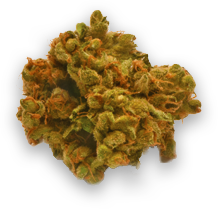
Flower
The flower is the actual flower bud that is found on the Cannabis plant.
When harvested and dried, flower is typically either smoked or vaporized using any number of devices to suit individual needs. Traditionally, this is the most used form of Cannabis and is available in numerous flower strains, all of which are distinguished by appearance, effect, odor, potency and taste.
Response time: Despite the relatively quick response time of utilizing flower, the variety of strains and their relative potency levels yield a vast spectrum of efficacy and usage results. As each person may respond differently, it is recommended to start slowly with a single inhalation and wait at least ten minutes before taking a second inhalation. Repeating the process in ten‐minute intervals allows the patient to safely measure and achieve the desired effects of the medicine.
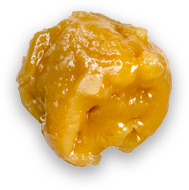
Concentrates
Concentrates are oils from the Cannabis plant that are extracted through scientific processes using solvents such as CO2, ethanol or butane.
Concentrated Cannabis is a more diverse form of medical marijuana. Its products range from stalked resin glands or trichomes in solid or resinous forms to waxes and oils. Like flower, concentrates are typically smoked or vaporized, including smokeless inhalation methods. The potency of this Cannabis form tends to be stronger than flower or infused products.
Response time: Concentrates deliver an immediate effect, typically recognized within five minutes of usage — although each person may respond differently. As with any inhaled Cannabis product, it is recommended to start with a single inhalation and wait a period of time (at least five to seven minutes in this case) before taking a second inhalation. Repeating the process in seven‐minute intervals allows the patient to safely measure and achieve the desired effects of the medicine.

Infused Products
Infused products are any products infused with concentrated Cannabis extracts. Forms of infused products include candy, baked goods, beverages, tinctures, oral sprays, pills, topical products, and personal care products.
Response time: AAs there are many infused products that can be purchased in various potency levels, it is not possible to predict response times for this category as each person may respond differently. It is important to note, however, that these products may have a longer response time than those experienced with flower or concentrates. Therefore, when testing an infused product for the first time, it is recommended to use only a small dose in a controlled environment (e.g., do not plan to drive, operate heavy machinery, etc.) and wait at least 30–60 minutes before taking another dose.
Cannabis Consumption Methods and Response Time
Just as the potency and the form of Cannabis determine the reaction time of each product, so does the method of its consumption. The different consumption methods for all forms of Cannabis and their relative impact on reaction time are as follows:
Inhalation
Flower and Concentrates
Inhalation allows a majority of the medicine to enter the bloodstream by passing through the lungs. There are a variety of ways to inhale Cannabis flower or concentrates, the most common being the use of a pipe (made from a variety of materials such as glass, ceramic, and wood), or a Cannabis cigarette. In addition to these methods is vaporization, which requires a special device to vaporize the active ingredients of the plant material for the purposes of inhalation. Doing so ultimately reduces exposure to carcinogens, making it a popular alternative.
This direct method of consuming Cannabis generally produces an effect within a few minutes (as mentioned above in “flower” and “concentrates”). Both inhalation forms yield a short duration period and may require repeated treatments within a few hours.
Infused Products
Oral Ingestion
Cannabis can be ingested through infused edible products, which some patients find more convenient and innocuous than inhalation. In this method, Cannabis is introduced through the gastrointestinal tract and processed by the liver, before entering the bloodstream.
Individual responses to edibles vary depending on the product’s potency, the patient’s metabolic rate, and/or prior food consumption. While the reaction time may not be immediate for edibles, taking up to two hours to realize the effects, the duration of their effects is known to last as long as ten hours.
Infused Products
Topical and Sublingual
In addition to ingesting edibles, cannabinoids can enter the bloodstream through absorption via the mucous membranes and blood vessels abundant in the mouth. Infused products within this category include but are not limited to medicated tinctures, sublingual sprays, and dissolvable strips — each of which may be placed on or under the tongue, as well as inside the inner cheek pocket. The response time of this delivery method is immediate with relief generally attained within a few minutes.
Cannabinoids can also be absorbed through the skin, through topical products such as balms, salves, creams, lotions, patches, and liquid sprays. Topical applications are generally used for localized pain, allowing cannabinoids to focus on a specific area. The response to the application usually occurs within minutes.
THC vs CBD vs CBN
Tetrahydrocannabinol (THC) is one of the most notable chemical compounds found in Cannabis. It’s the psychoactive substance that produces the feeling of being high. A higher level of THC can produce an increased “euphoric” experience. While THC can affect mood and behavior, it also has been known to have anti‐inflammatory benefits.
Cannabidiol (CBD), unlike THC, is not psychoactive. As a safe, non‐addictive substance, it is a natural alternative best known for its medicinal purposes. CBD has the capability to act on the brain’s receptor for serotonin, the hormone that stabilizes our mood and well‐being. As a therapeutic, it may help to reduce chronic pain, anxiety, and depression.
Cannabinol (CBN) is a cannabinoid that is lesser known than THC or CBD but offers several therapeutic medicinal purposes, such as anti‐insomnia, pain relief, anti‐inflammatory, anticonvulsant, and an appetite stimulant. CBN is formed from aged THC, found in older cannabis. Similar to THC, CBN is a psychoactive compound, but milder.
